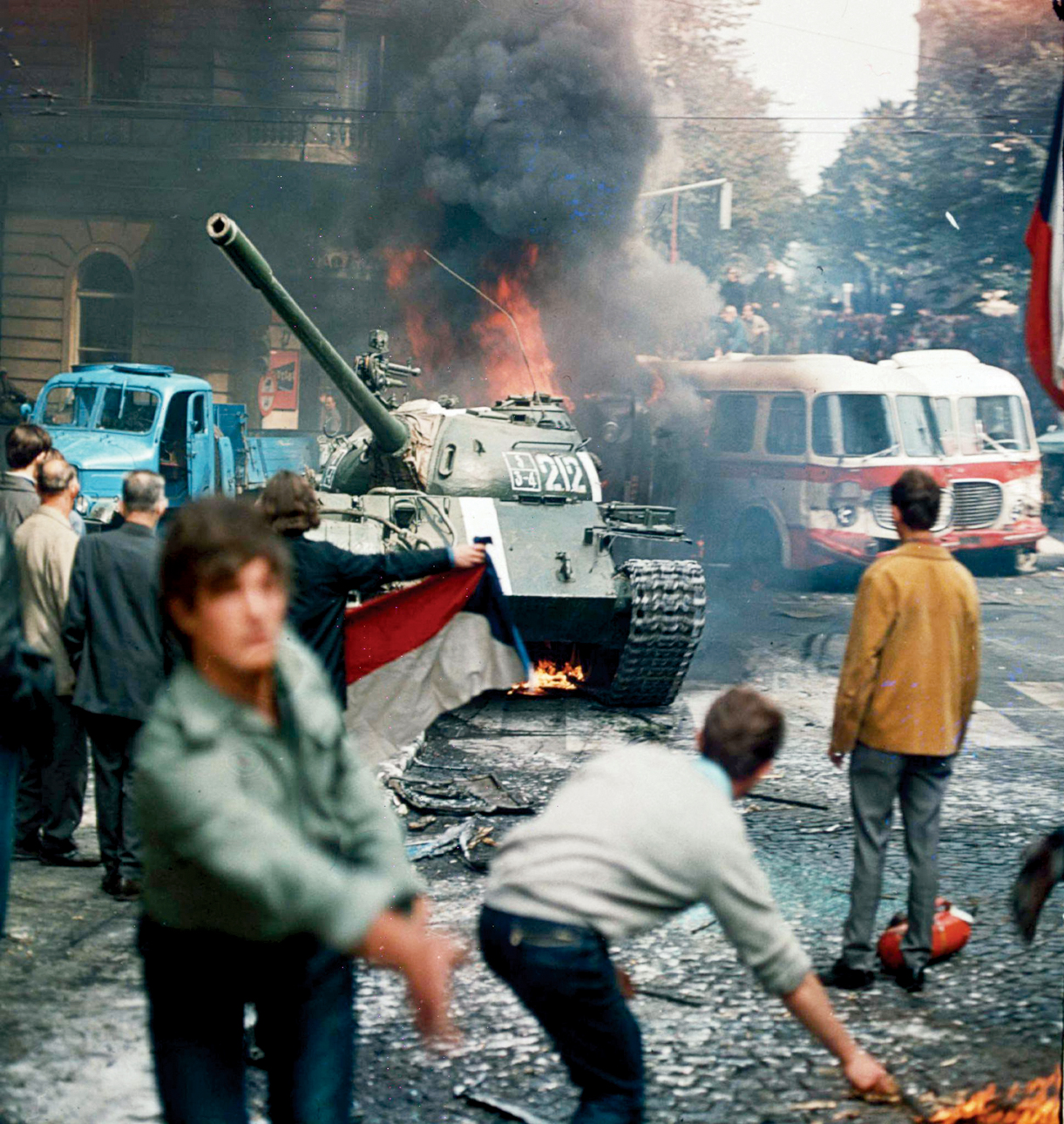A History of World Societies:
Printed Page 985
A History of World Societies Value
Edition: Printed Page 1000
The World in 1968
In 1968 pressures for social change boiled over into protests worldwide. The preceding two decades offered the world an example of how much people could change as decolonization swept much of the world. Radical revolutionary struggles stretched from Cuba to the remaining colonies in Africa and the war in Southeast Asia. The architecture of white supremacism and racial segregation was being dismantled in the United States. In turn, in industrialized and industrializing regions of the world, the generation raised in the aftermath of the Second World War saw great economic growth and a rapid rise in consumer culture and popular media.
Young protesters drew upon recent history to appreciate how much could be achieved and looked at their world to see how much more was needed. Students across Latin America and western Europe, Czechoslovaks weary of the harshness of Soviet domination, activists for civil rights and women’s rights in the United States, along with opponents of the U.S. war in Vietnam, all took loudly to the streets. The world seemed to be at a tipping point between the goals of conservative defenders of the existing social and political order and those of a young generation energized by the possibility of radical and swift change.
In Czechoslovakia the “Prague Spring” — a brief period of liberal reform and loosening of political controls — unfolded as reformers in the Czechoslovakian Communist Party gained a majority and replaced a long-
In France, students went on strike over poor university conditions. When government forces punished those protesters harshly, a much larger and more radical wave of student protests erupted. The students were soon joined by a general strike carried out by France’s labor unions. The intensity of the strikes captured the angst of the generation that had been raised in post war Europe. For many of them, their governments’ post war socialist reforms were incomplete and the time was now ripe for more far-
In Latin America students rose in protest as well. In Argentina students in the industrial city of Córdoba went on strike against the military dictatorship that had been in place since 1966. Joined by factory workers, the protesters took control of the city in an event known as the Cordobazo. In Brazil a national student strike challenged the military dictatorship that had been in power since 1964. In Mexico City, where the Olympic games were scheduled to be held, students used the international visibility of the event to protest the heavy-
In the United States protests against the Vietnam War and against the military draft erupted on college campuses nationwide. These protests marked an increase in popular mobilization in a country where civil rights marches in the South now extended to protests against discrimination and police violence in cities like Boston and Chicago. Protesters around the world were aware of each other, and their sense that they participated in a worldwide movement against the abuses of the established order empowered them. Their actions echoed Che Guevara’s call for “two, three or many Vietnams” of resistance against imperialism.
In 1968 the intensification of protests may have suggested that social movements worldwide were on the verge of opening the floodgates to a wave of radical change, but the opposite was more true. Protesters and reformers faced violent reactions from the powerful political and economic groups they challenged. If 1968 seemed to be the peak of young radicals’ aspirations for social transformation, this was because it also marked the intensification of the reaction against their efforts. Conservatives reacted against more than the protests of 1968: they sought to slow or sometimes reverse the dramatic changes that had taken place in the post war era.
In October 1968 Soviet troops and tanks flooded into Czechoslovakia, crushing the Prague Spring and unseating Dubček. Supporters of the Prague Spring faced harsh persecution. In Cuba, where revolutionary dreams of liberation were increasingly subsidized by the Soviet Union, Castro was obligated to support the Soviet crackdown, ruefully declaring: “We accept the bitter necessity which demanded the sending of troops to Czechoslovakia.”14

Around the world, protests were followed by violent crackdowns. The images of Soviet tanks enforcing the crackdown in Prague blurred with the Mexican government’s shooting of student protesters in Tlatelolco. The Argentine army and paramilitary groups launched a violent campaign to retake the city of Córdoba from protesters. In Brazil, the military regime reacted to protests by imposing a harsh new national security law that made even criticizing the government an offense punishable by jail sentences handed out by military tribunals. In the United States, assassins killed Martin Luther King, Jr., and other civil rights leaders. Chicago police attacked antiwar demonstrators outside the Democratic National Convention. In 1967 Che Guevara was assassinated by Bolivian troops trained and led by the U.S. government. Around the world, revolutionary violence was met with increasingly violent repression.